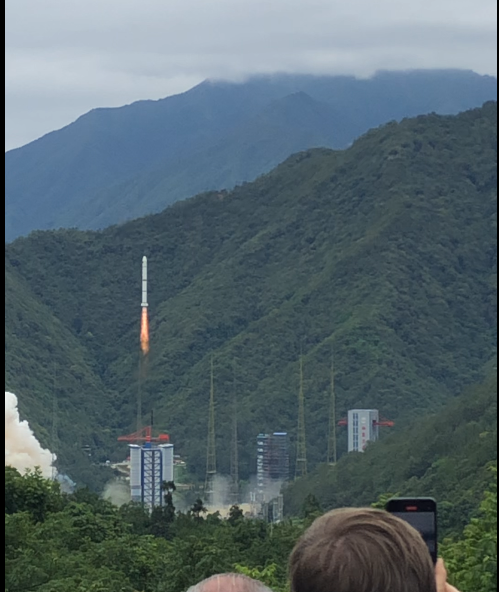Scheduled to run for three years, the SVOM (Space-based multi-band astronomical Variable Objects Monitor) mission is the result of a fifteen-year collaboration between two national space agencies : the China National Space Administration (CNSA) and the Centre national d’études spatiales (CNES) with, for France, major contributions from CEA and CNRS.

Placed in Earth orbit at an altitude of 625 kilometers, the mission’s objective is to detect and study gamma-ray bursts, the most energetic phenomena in the Universe.
Gamma-ray bursts can result from the most distant explosions of massive stars, or from the fusion of compact objects such as neutron stars. Lasting just a few thousandths of a second, these flashes are the result of a colossal release of energy, equivalent to that generated by the Sun over its entire lifetime.
Some gamma-ray bursts are presumed to occur when two neutron stars, or a neutron star and a black hole, orbit each other before coming together and merging. Others are linked to the sudden death of very massive stars in distant galaxies.
This light was sometimes emitted when our Universe was less than a billion years old. So, before reaching us, the light from these stars crosses several billion light-years, taking on the imprint of the Universe’s multiple epochs. In other words, studying gamma-ray bursts contributes to our understanding of the formation of our Universe.
The fleeting nature of gamma-ray bursts, lasting from a fraction of a second to just a few seconds, makes them extremely complex to observe. During the explosion, this brief, intense gamma-ray burst is generally followed by an emission of X-rays and visible light, which can be observed for several days.
Tracking and tracing
In addition to the satellite itself, for which France and China have each supplied two scientific instruments, the mission involves a vast infrastructure on the ground, responsible for maintaining a link with the satellite once the fleeting gamma-ray burst has been detected, followed by its afterglow emission in X-rays and visible light.
In less than a minute, information on the position of the gamma-ray burst on the celestial vault will be transmitted to the ground, via a network of antennas deployed around the equator and the tropics, to two monitoring centers in France and China. The latter can then launch further investigations and, if necessary, alert large terrestrial telescopes, so that they in turn can focus on the area of sky and observe the gamma-ray burst in greater depth.
The contribution of Observatoire de Paris - PSL
Observatoire de Paris - PSL is involved in this mission, in this close synergy between ground and space.
Within the GEPI laboratory, Susanna Vergani, CNRS research director, has been able with her team (currently formed by Jesse Palmerio, Isabelle Jégouzo, Andrea Saccardi and Sofia Bisero) to bring her unique know-how to the mission with the development of the data processing pipeline and a guiding role in the ground follow-up of the mission using large telescopes.
| Questions for Jesse Palmerio Jesse Palmerio is a CNRS research engineer at Observatoire de Paris-PSL. He explains his contribution to the SVOM space mission. |
This was made possible by double ANR funding, support from the ED, DIM ACAV and CNES.
Observatoire de Paris - PSL is thus in a front-line position for the scientific exploitation of the mission.

